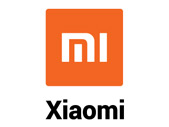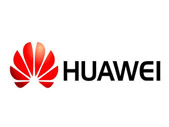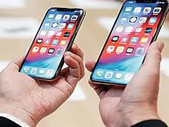|
|
|
|
OnePlus Nord to get first OxygenOS 11 open beta next week, OnePlus 7/7T series to follow
 OnePlus has recently revealed its OxygenOS 11 open beta build timelines for the OnePlus Nord and the OnePlus 7/7T series in a new post on the brand's forums. Here are all the details. OnePlus has recently revealed its OxygenOS 11 open beta build timelines for the OnePlus Nord and the OnePlus 7/7T series in a new post on the brand's forums. Here are all the details.
It’s been quite a while since OnePlus made the Android 11-powered OxygenOS 11 skin official for its devices. However, only the OnePlus 8 series phones have got the new update so far. Users of the OnePlus 7/7T series and the recent OnePlus Nord were left with no concrete information about the rollout of OxygenOS 11 for their devices. However, a recent official post on the OnePlus forums has confirmed the release date.
As per the post, OnePlus will be releasing the first open beta build for the OnePlus Nord next week. The open beta builds will allow any enthusiast with the OnePlus Nord to try out the new update and report any bugs which can then be ironed out in a stable release. OnePlus also revealed that the first open beta builds for the OnePlus 7 and 7T series would be released “shortly after”. The Chinese smartphone maker has reportedly worked with Qualcomm to fix a data decryption issue that had previously plagued the 7/7T series while updating to OxygenOS 11.
OxygenOS 11: All you need to know
With OxygenOS 11, OnePlus is bringing Android 11 as well as some new features and a revamped UI to its devices. The UI will see bigger titles on the top and more concentration of elements towards the bottom, similar to Samsung’s One UI. OnePlus claims this allows for an easier one-hand usage experience. This design language will be carried throughout OnePlus’ system apps.
The phones will also be getting Always-On Display (AOD), which will allow users to keep their screens on and display important information like the time, weather and more. A new insight AOD screen will also keep users informed of how frequently they unlock and use their phones.
What about the OnePlus 6/6T series and the Nord N10 and N10/100 phones?
The OxygenOS 11 skin will also be coming to the OnePlus 6/6T series and the budget-oriented Nord 10 5G/100 phones. However, OnePlus has no exact dates for these devices as of now. Further, it remains to be seen if all features like the Always On Display are carried over to the budget Nord series phones. It also seems that this is where the major updates end for the older OnePlus 5/5T series phones.(Source: Indian Express)
|
Xiaomi’s Mi 11 will not ship with a charger inside box, CEO Lei Jun confirms
 Like Apple intends to reduce the carbon footprint, Jun also cited "environmental protection" as the main reason behind the company's move to make the bold move.
Like Apple intends to reduce the carbon footprint, Jun also cited "environmental protection" as the main reason behind the company's move to make the bold move.
The internet was filled with memes when Apple announced that its new iPhone 12 series will not be shipping with a charger in the box. Even a few smartphone companies including Xiaomi took a dig at the Cupertino giant for their controversial move. However, it seems like other companies are following in Apple’s footsteps too. Xiaomi’s CEO, Lei Jun has confirmed on Weibo that the company’s upcoming flagship device Mi 11 will “pack lightly” meaning that there will be no charger in the box.
Like Apple intends to reduce the carbon footprint, Jun also cited “environmental protection” as the main reason behind the company’s move to make the bold move.Jun posted, (translated from Mandarin) “In response to the call of technology and environmental protection, the included charger is cancelled from the box. Hope to get your support. Is there a better solution between industry practice and environmental protection? Next Monday night, at the press conference, let’s talk.”
Samsung also made an ad mocking Apple’s move but deleted the tweet after. There are also rumours that the South Korean tech major will be launching its flagship S21 series in January which will also ship without the charger.
It is yet to be seen whether the removal of the charger will help in reducing the price of the Mi 11 or not which wasn’t the case with new iPhones. However, unlike the new iPhones, Xiaomi offers crazy charging speeds which will eventually lead to people buying chargers separately anyway.
Earlier this week, Xiaomi also confirmed that Mi 11 will be launched that it will be unveiling the smartphone on December 28 in China. The India release date is yet to be released. Mi 11 will be the first phone to be powered by the latest Qualcomm Snapdragon 888 processor. Leaked images ahead of the release also suggest a redesigned camera module on the back. (Sourece: Indian Express)
|
Offline Retailers Running out of Handsets as Distributors Hoard
 GLOBAL ECONOMY HURTING AMID INVENTORY SLUMP AND VOLATILE PRICES GOING VIRAL Covid-19 Impact. Industry watchers say wholesalers are holding back stocks of popular phone models in anticipation of a price rise by the month-end as production in China slows; brands as yet unaware of complaints
GLOBAL ECONOMY HURTING AMID INVENTORY SLUMP AND VOLATILE PRICES GOING VIRAL Covid-19 Impact. Industry watchers say wholesalers are holding back stocks of popular phone models in anticipation of a price rise by the month-end as production in China slows; brands as yet unaware of complaints
Offline phone sellers are facing a shortage of top-selling models as some wholesale distributors are allegedly hoarding stocks in anticipation of increased prices by March-end due to production cuts in the factories of coronavirus-hit China, retailers and analysts said. Brands though said they had not faced such complaints so far, but were watching the unfolding situation closely.
“We understand that there is hoarding of top models of fast-moving brands, especially in the below $150 segment, in anticipation of a price rise,” said Upasana Joshi, an associate research manager at International Data Corporation, India.
None of the smartphone brands have yet officially increased the prices for their devices except for Xiaomi, which raised the price of the Redmi Note 8 by Rs 500 in February. However, offline retailers in a few places are unofficially selling some devices at a 2-3% premium, Joshi said.
“We are unable to fetch some models from wholesalers such as the Oppo Reno series, Oppo A1 and the Vivo V series besides Apple’s iPhone 11,” said a Delhi-based retailer who did not wish to be named. “But, we can’t increase price beyond a certain point as customers can easily buy the device online at the official price,” he added.
Brands said while they had not yet seen any instance of hoarding, they would take action against anyone doing so.
“As of now, we have been able to meet the demand of the Indian consumer by ensuring consistent stock of most models. We try to avoid the situation where retailers need to hoard the supplies of our phones,” a Vivo spokesperson said in response to ET’s queries.
A Xiaomi spokesperson rejected any possibility of hoarding, saying: “If such a thing would be happening, we would know by our daily sales reports.”
At Wuhan, the Chinese city that is the epicentre of the
Covid-19 outbreak, major component factories are running at 40% of their capacity. Although the extended Lunar New Year holiday ended on February 9, workers still haven’t returned to work, according
to reports.
Market intelligence firm TechArc estimates prices could rise 6-7% for top models of select brands if the disruption in supply chain continued at current levels.
“Buyers may be hit by price shocks during April-June as inventories will dry up by then due to lower imports on account of the extended Chinese New Year holiday in February,” TechArc research director Faisal Kawoosa said.
Though major Chinese brands including Xiaomi, Oppo, Vivo and OnePlus assemble their devices within India, they are heavily dependent on China for parts such as display, battery, memory and printed circuit boards.
Besides these, Apple’s latest models including the iPhone XR and iPhone 11 are entirely shipped from China.
The brand does not modify prices as per demand-supply equation and thus the attempt to hoard becomes irrelevant, a person aware of company’s strategy said. (Source: Economic Times)
|
Pre-Bookings open for Samsung Galaxy S20, S20+, and S20 Ultra
 The Galaxy S20 is priced at Rs 66,999, While S20+ and S20 Ultra belong to a higher range of price i.e Rs 73,999 and 92,999 respectively.Samsung has announced pre-book for consumers planning to buy Galaxy S20, the latest series of flagship devices that were launched at the Unpacked 2020 on February 11. The Galaxy S20 is priced at Rs 66,999, While S20+ and S20 Ultra belong to a higher range of price i.e Rs 73,999 and 92,999 respectively.Samsung has announced pre-book for consumers planning to buy Galaxy S20, the latest series of flagship devices that were launched at the Unpacked 2020 on February 11.
Customer who pre-booked in India will receive their Galaxy S20 beginning March 6, 2020, making them among the first set of consumers worldwide to own the new flagships, Samsung stated in its official release.
All three devices in the Galaxy S20 series— Galaxy S20, Galaxy S20+, and Galaxy S20 Ultra – will be available for customers in India. Galaxy S20 is priced at Rs 66,999. While S20+ and S20 Ultra belong to a higher range of price i.e Rs 73,999 and 92,999 respectively.
Samsung claims that the Galaxy S20 series comes with several world-first camera innovations to capture better quality pictures and videos. Galaxy S20 and Galaxy S20+ have a 64MP camera, while Galaxy S20 Ultra has a 108MP camera. Galaxy S20 and S20+ can zoom up to 30X. Samsung, in its official release, mentioned that the quality is achieved by a combination of Hybrid Optic Zoom and Super-Resolution Zoom.
The Korean brand stated that Galaxy S20 comes with a new camera system—powered by AI and with Samsung’s biggest image sensor. Samsung further claimed that the newly launched smartphones can shoot a single take video for up to 10 seconds to get a variety of formats. According to Samsung, Galaxy S20 offers an 8K video shooting. Users can also take a still from an 8K video and turn it into a high-resolution photo.
Connection Offers
Samsung has also collaborated with different networks like Jio, Airtel, and Vodafone to provide discounted plans to Galaxy S20 users. Jio users will get double data benefits with additional one-year unlimited services with Jio’s annual plan of Rs 4,999 annual plan. While for Airtel users, Samsung is providing double data on the recharge of Rs 298 and Rs 398 for the first 10 consecutive recharges for prepaid customers. As far as Vodafone and Idea customers are concerned, Samsung will provide double data on recharge of Rs 399 with 56 days validity for the first six recharges for prepaid customers.(Source: The Hindu Businessline)
|
Apple iPhone 11 review: A few less features for a lot less money
 It isn’t surprising that the iPhone 11 has been flying off the shelves in India even before it got to the stores. Online pre-orders were snapped up so promptly that one can see the confidence customers place in the Apple brand and the specific product. The iPhone 11’s predecessor, iPhone XR, did so well it gave Apple a leap ahead in market share.
It isn’t surprising that the iPhone 11 has been flying off the shelves in India even before it got to the stores. Online pre-orders were snapped up so promptly that one can see the confidence customers place in the Apple brand and the specific product. The iPhone 11’s predecessor, iPhone XR, did so well it gave Apple a leap ahead in market share.
That phone will still be available and is Rs 39,999 for the base model in some places online right now but of course there are customers picking up the brand new iPhone 11 at Rs 64,900 (base model) and a lot less depending on the scheme one chooses.
The iPhone 11 is a smartphone that feels rather substantial in the hand. It weights 194 gms and certainly is not for those looking for a feather-light slim phone. Instead it’s for someone who likes the solidity and reassurance of a good build.
iPhone 11 or iPhone 11 Pro?
If you have the money set aside for a really expensive phone or if someone else is generously paying for it, you will naturally be wondering which of the iPhones to choose. The two iPhone Pro models are almost identical to each other except for size and a scaling down of such things as battery and screen to go with the size. They’re the two more advanced models. That doesn’t meant thought hat you should feel cheated out of something major by opting for the iPhone 11.
There are a few design differences between the iPhone 11 and the iPhone 11 Pro models. The iPhone 11 has no smaller version so you don’t have the choice of getting a more easy-to-hold device if you opt for it. You do have a nice choice of colours though because that’s one thing the Pro models have a limited number of options for. The iPhone 11 comes in six shades: red, white, black, blue, purple, and yellow. The purple is an entirely new shade as is the mint blue (or green if you see it that way). The finish is glossy, as we’ve known iPhones to be, and the device needs to go into a case because it will really smudged.
The two iPhone 11 Pro phones have two sizes to choose from and come in a new matte finish that is glass but feels like metal. Fingerprints are less evident on these and you can get away with using no case though vulnerability to damage from falls and knocks doesn’t change. The colour choices are silver, gold, space grey and a colour that people have really liked, midnight green. It’s actually only subtly different from the grey and only looks green at some angles.
On the inside, the iPhone 11 has a 6.1 inch LCD screen with a 1792x828 pixel resolution at 326 ppi density. The iPhone Pro phones have OLED displays with much higher resolution and pixel densities. But the iPhone 11’s screen does so well with its specs that it’s easily one of the best LCD’s and more than enough for most people — unless they’re reviewers who stare and compare. The Pro phones do have much greater brightness range however.
All three new iPhones work on the new A13 Bionic chip, capable of handling augmented reality tasks, gaming and artificial intelligence powered activities equally well. So the Pro phones are by no means more powerful.
What the iPhone 11 Pro models have to their advantage is three camera lenses instead of just two on the iPhone 11. At the same time, photography quality has been improved on all of these. The main “Wide” camera on the iPhone 11 Pro phones is a 12MP sensor with f/1.8 aperture, and optical image stabilisation. It also has an ‘Ultra Wide Angle’ lens, also a 12MP with an f/2.4 aperture and a 120-degree field of view. The third 12MP sensor goes into a telephoto lens which has an f/2.0 aperture and 2X zoom. The iPhone 11 has the first two but not the third. You can do a software zoom but not one that is supported by sheer optics. All three phones have a new and impressive night mode, excellent clarity and colour and are acknowledged to be the best for video. The difference in cameras can be soon on the back of the phones where on the Pro models there’s a big square holding all three lenses. On the iPhone 11, there are two lenses prominently displayed.
iPhone 11 vs iPhone XR
There are more choices than these two, the least expensive of this year’s and last year’s lineups, but for now it looks like the XR is available at reduced prices and still isn’t a smartphone you could consider obsolete by any means. It’s still a great phone and has in common with the new iPhones, iOS 13, which means the same software experience for the most part, and the same new features such as Dark Mode, new Siri, extensive new Photo features, updates to keyboards and more.(Source: The Hindu BusinessLine)
|
Handset Makers Seek Fast Action on Sourcing Norms
 Foreign handset makers expect the budget announcement on easing local sourcing requirements for single-brand retail to encourage investments in India, but they want the government to make the changes meaningful and implement the proposal quickly.
Foreign handset makers expect the budget announcement on easing local sourcing requirements for single-brand retail to encourage investments in India, but they want the government to make the changes meaningful and implement the proposal quickly.
“It is a welcome reform, but the real impact can be gauged only after the exact details of the sourcing norms are announced,” said Vikas Agarwal, head of India operations, OnePlus.
FM Nirmala Sitharaman did not announce details of the proposal in her budget on Friday. Current regulations require foreign-owned single-brand retailers to locally source 30% of the value of items sold in India. This rule has been cited as an impediment for investment by several foreign retailers. Single-brand retail is a “necessity” as the local retail ecosystem is yet to mature to global standards, Agarwal said, adding: “Given the ambitious goal of (India to become a) $5 trillion economy, we hope the execution will be swift and meaningful this year, without any further delay.”
Single-brand retail is critical for marquee brands wanting to set up stores in a market like India, since investments for such retail activities come from the brands themselves, and not local partners or franchisees who may not have as much skin in the game, an industry executive said. “For brands, it’s about long-term brand presence. They prefer direct investment to be able to make necessary investments in line with their global standards, but unless they meet local sourcing norms, they cannot invest,” this executive said. “As things stand, building a local sourcing and supply chain may not be an attractive opportunity for most brands due to small local scale, upfront investment and lack of clarity or uncompetitive incentives.” (Source: Economic Times)
|
Huawei’s P30 Pro: Zoom in fifty times over
 This steeply priced beautiful phone is a photographer’s delight. I’m waiting for a world where phones with jaw-dropping photo capabilities are common enough to be dirt cheap. But something tells me that isn’t happening. Meanwhile, Huawei’s beautiful P30 Pro with its powerful camera costs an arm and a leg at about ₹72,000. This steeply priced beautiful phone is a photographer’s delight. I’m waiting for a world where phones with jaw-dropping photo capabilities are common enough to be dirt cheap. But something tells me that isn’t happening. Meanwhile, Huawei’s beautiful P30 Pro with its powerful camera costs an arm and a leg at about ₹72,000.
If I’ve said ‘beautiful’ one too many times, it’s because this smartphone really is that — in some of its colours. I clamoured for and got the Breathing Crystal variant for review and I often just pick it up to look at it. We’re told this particular model is inspired by the sunrise on a salt mountain. Tilt the phone up or down and just watch the colour on the back shift from an icy blue-white to a stunning progression of blues. It’s like gazing at the horizon from an aircraft. The tricks they manage to perform with glass these days is quite amazing. The other stunning variant available here is an Aurora Blue and that too is an immersive play of colours that all mesmerise.
But moving on, if you’re looking for a high performance comprehensive all-rounder phone, you have better options. The P30 is quite clearly for those who are willing, able and eager to use a phone for its camera. Not just the everyday selfie, but phone photography that calls for you to know and understand the camera app and its features, its limits and how to get the best out of them. When the phone was showcased at its launch event, it was difficult not to think that the cameras’ abilities were all gimmicks. But no, they aren’t lying, especially about the zoom.
Zoom right in
You don’t have to hunt for the P30’s zoom feature. It’s there on-screen in the camera app where it changes the extent possible depending on the mode selected. In regular Photo mode, you can attain a 5x (135 mm equivalent focal length) optical zoom with the slider. If you’ve run through the 5x zoom, up to 10x is a lossless hybrid zoom that also works wonders. After that it’s the software at work with the digital zoom allowing you to continue zooming in 50x. The results often may not look good at this maximum level but you need to experiment based on the subject and light conditions. To get sharpness and clarity at high levels of magnification, one would need hardware that wouldn’t fit on a phone, so Huawei has innovated with an interesting periscope arrangement of camera sensor and a mirror inside the device. The aperture size had to be limited at f/3.4, which means less light in the picture.
The interesting thing with the P30 Pro’s zoom is that you can see things that are really far away. Reviewers are joking that you can spy on your neighbours, which is true enough, but I’ve had more uses for it than that, being really shortsighted. As a matter of fact, my review process coincided with a visit to the eye hospital and some eye surgery. Going over to the low vision aids department, I found that absolutely nothing had changed in the past few decades. Nothing on offer would have helped me in daily life, especially with reading signs that were far away. What I ended up doing was showing the doctors the P30 Pro with which I could read the eye chart in the next room! The phone’s camera turned out to be a far more powerful visual aid than the low vision aids available. In daylight, you can zoom into and read things with startling clarity and detail. The P30 Pro isn’t the first device to come with a powerful zoom, but its implementation is unique as is the extent of the feature.
The other fascinating capability of the P30 Pro’s camera is its ability to shoot in the dark so that you see in a photograph, what you barely can otherwise. Google’s Pixel 3 also does this if you use its Nightsight mode, but the two phones do this differently depending on the amount of light in a dark place with the Pixel 3 needing less than total darkness. In fact, the methods used are different.
Shot in the dark
The P30 Pro can actually show you something even in a completely dark room — or almost — and though the photograph isn’t usable as a photograph, it is again an interesting visual aid. Given a little more light and shooting something like a cityscape at night results in very nice pictures. You can even sometimes zoom in closely with its cameras.
Clearly, with these two features, the P30 Pro has raised the bar for phone photography, but its Leica quad camera has some other shooting modes that make it a complete camera phone. One of these is a super macro mode that allows you to shoot from just 2.5 centimetres away from the subject. Ordinarily, even good camera phones have a tough time locking focus at this distance as they aren’t even designed to. Give the P30 Pro some light, and it will let you take some pretty good close-ups. All that’s left for you to do is find an exotic subject to shoot. Another feature is the wide-angle lens, always fun to shoot with. Portrait mode is also present
The 40 MP ‘SuperSensing’ or ‘SuperSpectrum’ sensor newly introduced by Huawei on this phone uses a red-yellow-blue array rather than a red-green-blue as is more usual. This is because the light frequency of yellow is more sensitive and absorbs more light, making for clearer photographs.
The main camera on the P30 Pro is 40 MP, 27 mm, f/1.6. Its wide angle lens is 20 MP, 16 mm, f/2.2. The telephoto lens is 8 MP, 5x with periscope zoom, 135 mm, f/3.4. There is optical stabilisation for main and zoom lenses and a Time-of-Flight (ToF) for depth mapping. The front-facing selfie camera is 32 MP.
There’s more to the P30 Pro’s camera than space would allow here, but other than the camera, it is also a device that’s fully loaded with specs. It has an excellent in-display fingerprint sensor, good face recognition, fairly decent software with nice features such as Private Space. It works smoothly and has particularly good battery life for its 4,200 mAh battery along with fast charging, wireless charging and reverse charging.
Price: ₹71,990
Pros: Sets new bar in phone photography, beautiful looks and build, excellent battery life, wireless, fast, reverse charging, great performance
Cons: Very expensive, no headphone jack, screen needs to be better, can’t use all memory cards. (Source: The Hindu BusinessLine)
|
First 5G iPhone to hit the stores in 2020: Report
 Intel to provide iPhone 5G modem, while Qualcomm-powered Android smartphones with 5G capability will start rolling out next year. The first 5G iPhone is likely to use an Intel modem, the 8161, and it could hit stores in 2020, according to a report in Fast Company. Intel to provide iPhone 5G modem, while Qualcomm-powered Android smartphones with 5G capability will start rolling out next year. The first 5G iPhone is likely to use an Intel modem, the 8161, and it could hit stores in 2020, according to a report in Fast Company.
If everything goes as planned, Intel will be the sole provider of iPhone modems, said the report.
For prototyping and testing of the 5G iPhone, Intel is reportedly working on a precursor to the 8161modem, called the 8060.
To increase transistor density for more speed and efficiency, Intel is likely to fabricate the 8161 using its 10-nanometre process.
The performance of 8060 appears to have triggered a little tension between Apple and Intel due to “heat dissipation issues” that would both raise the temperature and hurt battery life, the report said.
However, Apple’s current issues with Intel are not serious enough to cause Apple to turn to Qualcomm for the supply of 5G modems, said Fast Company report, based on its source.
Apple declined to comment on the report.
The first 5G smartphone is expected next year.
Android phones from manufacturers such as Xiaomi, Oppo and Huawei will contain 5G modem chips made by Qualcomm, which has claimed that its modems have managed the heat dissipation issues, the report said. (Source:ETTelecom)
|
Indians spent over Rs 50k crore on Chinese phones in FY18
 Consumers in India spent more than Rs 50,000 crore in FY18 on purchasing smartphones made by just the top four Chinese brands, nearly twice what they spent on them in the previous fiscal. That trend is set to continue with Chinese brands dominating the Indian smartphone market, analysts and industry executives said. The four — Xiaomi, Oppo, VivoNSE 0.00 % and Honor — along with a few other Chinese brands like Lenovo-Motorola, One-Plus and Infinix, make up more than half of the total Indian smartphone market by sales. Sales of Chinese brands are growing rapidly this year too, as per the data available thus far, analysts said. Consumers in India spent more than Rs 50,000 crore in FY18 on purchasing smartphones made by just the top four Chinese brands, nearly twice what they spent on them in the previous fiscal. That trend is set to continue with Chinese brands dominating the Indian smartphone market, analysts and industry executives said. The four — Xiaomi, Oppo, VivoNSE 0.00 % and Honor — along with a few other Chinese brands like Lenovo-Motorola, One-Plus and Infinix, make up more than half of the total Indian smartphone market by sales. Sales of Chinese brands are growing rapidly this year too, as per the data available thus far, analysts said.
The Chinese brands are launching high-specification models at lower prices than South Korean, Japanese and Indian companies and have successfully established themselves as global brands, in line with the Indian consumer’s preference for products made by multinationals, two analysts said.
Counterpoint Research associate director Tarun Pathak said the top Chinese brands have easy access to the Shenzhen hardware and R&D hub and the supply chain ecosystem. “This has helped them to be innovators and to be always on top of trends,” he said.
India stands to gain with Xiaomi, Oppo, Lenovo-Motorola, Huawei and Vivo investing in local manufacturing and creating jobs, thanks to Make in India policies. Xiaomi announced plans to invest Rs 15,000 crore in smartphone component manufacturing in April. Oppo is establishing two new manufacturing facilities in Uttar Pradesh.
Vivo employs more than 5,000 people in its plant. The chief of one of the largest cellphone retail chains said the Chinese brands have established themselves in key price segments — Xiaomi in the Rs 6,000-13,000 band, Oppo and Vivo in the Rs 10,000-22,000 one. Honor is gaining share in the Rs 8,000-12,000 segment.
“These price segments account for more than 80% of the overall market where no Indian brands have managed to cut the ice and Samsung is the sole non-Chinese brand to fight it out,” he said, requesting anonymity due to business reasons. As per Registrar of Companies (RoC) filings for FY18, Xiaomi Technology India’s revenue from operations was Rs 22,947.3 crore (Rs 8334.4 crore in FY17); that of Oppo Mobiles India was Rs 11,994.3 crore (Rs 8,050.8 crore); that of Vivo Mobile India was Rs 11,179.3 crore (Rs 6,292.9 crore) and Huawei Telecommunications India’s mobile business revenue stood at Rs 5,601.3 crore (Rs 3,584.2 crore).
The combined sales of these four Chinese smartphone makers in FY18 almost doubled to Rs 51,722.1 crore from Rs 26,262.4 crore in FY17, despite already being on a higher base. While Xiaomi and Huawei have been profitable in the Indian market, Oppo and Vivo are yet to break even. As per Hong Kong-based Counterpoint Research, the Indian smartphone market was valued at around Rs 1.5 lakh crore in FY18 compared with Rs 1.7 lakh crore for the total mobile phone market. Market research provider Euromonitor International pegged the Indian smartphone market at Rs 1.1 lakh crore in calendar year 2017 and projected sales for 2018 to touch Rs 1.2 lakh crore. The smartphone market is growing at about 10-11%, it said.
Analysts reckon the Chinese aggression in the Indian smartphone market will continue in the current fiscal as well with OnePlus retaining leadership in the Rs 30,000-plus premium segment for two consecutive quarters; the launch of new sub-brands such as Pocophone by Xiaomi and Realme by Oppo; and the high growth of newer Chinese players like Transsion Group with its Itel, Tecno and Infinix brands.
A Huawei India spokesperson said its Honor smartphone brand with its India-first approach had registered unprecedented growth of 281% in the first half of 2018 and was among the top two brands in the online segment in the April-June period on the back of several new launches across price segments.
Compared with the Chinese performance, Samsung, which has been present in India for two decades, posted smartphone sales of Rs 34,261 crore in FY17 while Apple posted sales of Rs 13,097 crore in FY18. Another Chinese smartphone maker, Lenovo-Motorola, posted sales of Rs 11,950 crore in FY17 which, however, includes the revenue from laptops and hardware too. The financials of Samsung and Lenovo-Motorola for FY18 are not available. (Source: Economic Times)
|
4GB RAM Vivo Y83 launched in India for Rs 14,990
 The smartphone also includes a split screen feature which can be easily activated by sliding down three fingers to split the screen in two, Vivo said. The smartphone also includes a split screen feature which can be easily activated by sliding down three fingers to split the screen in two, Vivo said.
Chinese smartphone maker Vivo on Friday launched its Y83 device with 6.22-inch 19:9 "FullView" display in India at Rs 14,990.
The smartphone will be available in black and gold variants across offline stores starting Friday and will also be available on Flipkart, Amazon and Vivo's own online shopping channel, the smartphone maker said.
"We are pleased to introduce the Vivo Y83 in our Y series product portfolio with an outstanding performance and superior camera capabilities at an ideal price point," said Jerome Chen, Chief Marketing Officer, Vivo India.
Vivo Y83 is equipped with a 13MP high-definition rear camera with PDAF technology and an 8MP selfie camera. The phone is powered by the MediaTek Helio P22 octa-core processor and backed by 4GB RAM and 32GB storage with an option to further expand it to 256GB.
The smartphone also includes a split screen feature which can be easily activated by sliding down three fingers to split the screen in two, Vivo said. (Source: ETTelecom)
|
OnePlus 5T in ‘Lava Red’ now available
 OnePlus may have a one-phone-a-year strategy, but the Chinese smartphone maker has released variants of their device, the newest being the OnePlus 5T in a metallic red they call ‘Lava Red’. OnePlus may have a one-phone-a-year strategy, but the Chinese smartphone maker has released variants of their device, the newest being the OnePlus 5T in a metallic red they call ‘Lava Red’.
Like the Star Wars Limited Edition variant launched a short while ago, the Lava Red too is a limited edition device and unlikely to remain on the shelves for long.
While it is, however, it can be bought from Amazon.in, for Rs 37,999 and from Oneplus’ experience store in Bangalore, and experience zones in Mumbai and Delhi NCR. It is also available at Croma stores.
The phone could cost up to Rs 17,545 less as part of an exchange offer. Other offers include a three-month no cost EMI on credit cards, an instant Rs. 1,500 discount for HDFC Bank debit and credit cards users, Rs. 2000 Exchange Bonus with every purchase of the OnePlus 5T on amazon.in, a three and six month no cost EMI, using Bajaj Finserv cards on OnePlus official e-store.
From the front, the Lava Red OnePlus 5T is all black with no other accents (such as white borders) clashing with the red on the back. The red back is smooth and metallic finished and a little more slippery than the sandstone versions launched earlier. Cases have already started to appear online and in stores and the box includes a transparent back protector.
Here’s a tip: the Lava Red version looks particularly interesting in a black sandstone case with the fingerprint sensor, edges and camera becoming vibrant red accents and standing out against the black.
The Lava Red device is identical in all other ways to the recently launched OnePlus 5T but is only available in the higher specs version with 8GB RAM and 128GB storage.
OnePlus has seen a surge in popularity over the past two years in India, a region which India MD Vikas Agarwal said had not even been in the company’s initial plans but which was was now one of the most important owing to the tremendous response from Indian fans. The OnePlus 5T has a vastly improved camera, a super fast fingerprint sensor, face unlock that is also very fast (and different from Apple’s more complex Face ID or Samsung’s Iris Recognition), and a fairly pure Android experience that makes the phone fast and powerful.
The much-loved alert slider remains intact on the new version allowing users to silence their devices or cut low priority calls and messages with a touch.
At the same time, all is not good news for OnePlus as the company admits 40,000 users’ credit card details were exposed because of a breach of its online store in the US, now quarantined and being investigated. (Source: The Hindu BusinessLine)
|
 OnePlus has recently revealed its OxygenOS 11 open beta build timelines for the OnePlus Nord and the OnePlus 7/7T series in a new post on the brand's forums. Here are all the details.
OnePlus has recently revealed its OxygenOS 11 open beta build timelines for the OnePlus Nord and the OnePlus 7/7T series in a new post on the brand's forums. Here are all the details.
 Like Apple intends to reduce the carbon footprint, Jun also cited "environmental protection" as the main reason behind the company's move to make the bold move.
Like Apple intends to reduce the carbon footprint, Jun also cited "environmental protection" as the main reason behind the company's move to make the bold move. GLOBAL ECONOMY HURTING AMID INVENTORY SLUMP AND VOLATILE PRICES GOING VIRAL Covid-19 Impact. Industry watchers say wholesalers are holding back stocks of popular phone models in anticipation of a price rise by the month-end as production in China slows; brands as yet unaware of complaints
GLOBAL ECONOMY HURTING AMID INVENTORY SLUMP AND VOLATILE PRICES GOING VIRAL Covid-19 Impact. Industry watchers say wholesalers are holding back stocks of popular phone models in anticipation of a price rise by the month-end as production in China slows; brands as yet unaware of complaints
 The Galaxy S20 is priced at Rs 66,999, While S20+ and S20 Ultra belong to a higher range of price i.e Rs 73,999 and 92,999 respectively.Samsung has announced pre-book for consumers planning to buy Galaxy S20, the latest series of flagship devices that were launched at the Unpacked 2020 on February 11.
The Galaxy S20 is priced at Rs 66,999, While S20+ and S20 Ultra belong to a higher range of price i.e Rs 73,999 and 92,999 respectively.Samsung has announced pre-book for consumers planning to buy Galaxy S20, the latest series of flagship devices that were launched at the Unpacked 2020 on February 11. It isn’t surprising that the iPhone 11 has been flying off the shelves in India even before it got to the stores. Online pre-orders were snapped up so promptly that one can see the confidence customers place in the Apple brand and the specific product. The iPhone 11’s predecessor, iPhone XR, did so well it gave Apple a leap ahead in market share.
It isn’t surprising that the iPhone 11 has been flying off the shelves in India even before it got to the stores. Online pre-orders were snapped up so promptly that one can see the confidence customers place in the Apple brand and the specific product. The iPhone 11’s predecessor, iPhone XR, did so well it gave Apple a leap ahead in market share.
 Foreign handset makers expect the budget announcement on easing local sourcing requirements for single-brand retail to encourage investments in India, but they want the government to make the changes meaningful and implement the proposal quickly.
Foreign handset makers expect the budget announcement on easing local sourcing requirements for single-brand retail to encourage investments in India, but they want the government to make the changes meaningful and implement the proposal quickly.
 This steeply priced beautiful phone is a photographer’s delight. I’m waiting for a world where phones with jaw-dropping photo capabilities are common enough to be dirt cheap. But something tells me that isn’t happening. Meanwhile, Huawei’s beautiful P30 Pro with its powerful camera costs an arm and a leg at about ₹72,000.
This steeply priced beautiful phone is a photographer’s delight. I’m waiting for a world where phones with jaw-dropping photo capabilities are common enough to be dirt cheap. But something tells me that isn’t happening. Meanwhile, Huawei’s beautiful P30 Pro with its powerful camera costs an arm and a leg at about ₹72,000.
 Intel to provide iPhone 5G modem, while Qualcomm-powered Android smartphones with 5G capability will start rolling out next year. The first 5G iPhone is likely to use an Intel modem, the 8161, and it could hit stores in 2020, according to a report in Fast Company.
Intel to provide iPhone 5G modem, while Qualcomm-powered Android smartphones with 5G capability will start rolling out next year. The first 5G iPhone is likely to use an Intel modem, the 8161, and it could hit stores in 2020, according to a report in Fast Company.
 Consumers in India spent more than Rs 50,000 crore in FY18 on purchasing smartphones made by just the top four Chinese brands, nearly twice what they spent on them in the previous fiscal. That trend is set to continue with Chinese brands dominating the Indian smartphone market, analysts and industry executives said. The four — Xiaomi, Oppo, VivoNSE 0.00 % and Honor — along with a few other Chinese brands like Lenovo-Motorola, One-Plus and Infinix, make up more than half of the total Indian smartphone market by sales. Sales of Chinese brands are growing rapidly this year too, as per the data available thus far, analysts said.
Consumers in India spent more than Rs 50,000 crore in FY18 on purchasing smartphones made by just the top four Chinese brands, nearly twice what they spent on them in the previous fiscal. That trend is set to continue with Chinese brands dominating the Indian smartphone market, analysts and industry executives said. The four — Xiaomi, Oppo, VivoNSE 0.00 % and Honor — along with a few other Chinese brands like Lenovo-Motorola, One-Plus and Infinix, make up more than half of the total Indian smartphone market by sales. Sales of Chinese brands are growing rapidly this year too, as per the data available thus far, analysts said.
 The smartphone also includes a split screen feature which can be easily activated by sliding down three fingers to split the screen in two, Vivo said.
The smartphone also includes a split screen feature which can be easily activated by sliding down three fingers to split the screen in two, Vivo said. OnePlus may have a one-phone-a-year strategy, but the Chinese smartphone maker has released variants of their device, the newest being the OnePlus 5T in a metallic red they call ‘Lava Red’.
OnePlus may have a one-phone-a-year strategy, but the Chinese smartphone maker has released variants of their device, the newest being the OnePlus 5T in a metallic red they call ‘Lava Red’.





